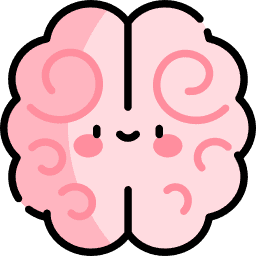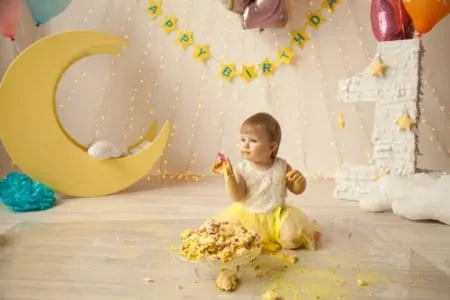Let’s be honest: toddler tantrums are exhausted. I know firsthand how draining they are. Your child goes from a sweet angel to a screaming nightmare in seconds, and suddenly, everything is a struggle.
You might feel like you can’t leave the house because of your unpredictable toddler. It gets to a point where you ask yourself, “Why am I so bad at this?”
Here is the truth: you are not a failure. Tantrums are a normal, albeit loud, part of growing up.
While they are difficult, you can learn how to navigate these emotional storms without losing your cool.
Key Takeaways
- Toddler tantrums are a normal developmental stage triggered by big emotions and limited communication skills.
- Effective management involves staying calm, co-regulating, and validating your child’s feelings.
- Avoid punishment or giving in to unreasonable demands, as these reactions can reinforce the behavior.
- Consult a pediatrician if tantrums become violent, frequent, or continue past age 4.
What Are Toddler Tantrums?

When you live with a toddler, it often feels like you are living with a tiny timebomb. You tiptoe around to avoid an explosion, but toddlers can throw a fit over almost anything.
One day they love their LEGO blocks, and the next day they scream at the sight of them. They might devour a specific snack today but throw it on the floor tomorrow.
Toddlers are unpredictable, which makes this stage incredibly trying for parents. The best way to describe a tantrum is a massive wave of intense emotions that your child cannot yet control (1).
Tantrums look different for every child. Some scream, while others sob uncontrollably. It is not unusual for toddlers to bang their heads, hold their breath, or get physical by kicking, hitting, or biting.
These outbursts are most common between ages 1 and 3. Frequent tantrums usually stop by age 4 (2). If they persist, it is worth discussing with your pediatrician.
There are generally two types of tantrums:
- Distress Tantrums: These happen when your child is tired, hungry, or emotionally overwhelmed. They are genuinely upset and need comfort.
- Strategic Tantrums: These occur when a child wants something (like a toy or candy) and uses screaming to get it. They might stop crying instantly if you give in.
Note About Breath Holding Spells
Why Tantrums Occur

Tantrums are completely normal behavior. Do not be fooled by social media parents displaying “perfect” children. Every toddler has meltdowns; some just have them more than others.
The main cause of a tantrum is a gap between what a toddler wants to do and what they can actually do (4).
Your child is developing a personality and seeking independence. They want to put on their own shoes or pour their own milk. When they can’t do it, or when you can’t understand their garbled speech, frustration builds up.
Because they lack the language skills to say, “I am frustrated because I can’t tie my lace,” they express it physically: screaming, crying, and flailing.
The Toddler’s Perspective
Imagine waking up in a foreign country where you don’t speak the language, your coordination is off, and giants control when you eat and sleep. That is your toddler’s life.
They are driven to explore, touch, and taste everything. When we stop them for safety reasons, they hear “no” constantly. Because their self-regulation skills are nonexistent, their reaction to this disappointment is huge.
We Must Guide Them
The Science: Upstairs vs. Downstairs Brain
To understand tantrums, it helps to look at the brain.
- The Downstairs Brain (Amygdala): This is the emotional alarm system. It is fully developed at birth and reacts to distress (hunger, fear, anger) instantly.
- The Upstairs Brain (Prefrontal Cortex): This is where logic, reasoning, and calmness live. In toddlers, this is still under major construction.
When a tantrum hits, the “downstairs brain” hijacks the system. The connection to the “upstairs brain” is cut off. Your toddler is literally incapable of rational thought in that moment (6).
They aren’t giving you a hard time; they are having a hard time. As parents, we have to act as their external “upstairs brain” to help them calm down.
Why Your Reaction Matters

How you handle tantrums shapes your child’s brain development. These moments establish the neural pathways required to manage stress later in life.
If we meet tantrums with anger and punishment, the toddler doesn’t learn how to regulate emotions. Instead, they might learn to fear their own feelings.
Not learning to process distress can lead to internalized problems (7). This can increase the risk of anxiety, depression, and behavioral issues down the road.
When handled with empathy, tantrums become a lesson in emotion regulation. This builds resilience and social competence (8).
How to Deal with Toddler Tantrums

There is no magic button to stop a tantrum instantly, but these strategies can help de-escalate the situation.
Offer a Hug (Co-Regulation)
Sometimes, the best response is a hug. Physical touch releases oxytocin, a calming chemical that helps reduce stress hormones (9).
Do not force it if they are thrashing, but stay close. You can say, “I see you are upset. I am here for a hug when you are ready.” This offers a safe harbor for their big emotions.
Be the Calm in Their Storm
When your child is screaming, your instinct might be to yell back. Fight that urge.
If you get angry, you add fuel to the fire. You also teach them that yelling is the correct response to stress. By staying calm, you model the behavior you want them to learn.
Firm But Kind
Change the Environment
If a tantrum hits in a grocery store or a busy park, move to a quieter spot. The sensory overload of a busy place can make it impossible for a child to calm down.
Pick them up and go to the car or a quiet corner. Once the audience and the noise are gone, they often settle down faster.
Label Their Emotions
Toddlers feel understood when you give a name to their pain. This technique, often called “Name it to Tame it,” helps reconnect the logical brain.
Try saying, “You are really frustrated because I wouldn’t buy the candy.” It validates their experience without giving in to the demand.
What Not to Do During Tantrums

Responding incorrectly to a tantrum can accidentally reinforce the behavior or make the meltdown last longer.
Do Not Punish for Feelings
Time-outs and punishments are rarely effective during an emotional meltdown.
By punishing a tantrum, you tell the child that their emotions are bad. This forces them to stuff their feelings down rather than process them. Punishment is for behavioral choices (like hitting), not for feeling sad or angry.
Do Not Give In
If your toddler screams for a cookie and you eventually hand it to them to shut them up, you have just taught them a lesson: “Screaming gets me cookies.”
This reinforces the behavior and guarantees more tantrums in the future. Be consistent. You can empathize with their desire (“I know you want the cookie”) without fulfilling it (“But we are eating dinner soon”).
Do Not Try to Reason
You cannot reason with a child whose logical brain is offline. Talking sense into a screaming toddler is like trying to teach algebra to a goldfish.
If they are in a full screaming, head banging, and kicking mode, it is best to make sure there is nothing nearby that could cause injury, and to walk away. Ignoring the tantrum in this way gives your toddler time to release the frustrations. I recommend this technique to my parents in practice. It also seems to shorten these outbursts and decrease how frequently they occur (10).
Editor's Note:
Dr. Leah Alexander, MD, FAAPSave the lesson for later when they are calm. During the storm, focus on safety and comfort.
How to Prevent Tantrums

You cannot prevent every meltdown, but you can reduce the frequency by anticipating triggers.
Use the HALT Method
Before you react to behavior, ask yourself if your child is Hungry, Angry, Lonely, or Tired.
Toddlers are prone to “hangry” meltdowns. Keep healthy snacks like fruit or crackers on hand when you are out. If they are tired, prioritize that nap. A well-rested, well-fed toddler is much more rational.
Offer Simple Choices
Toddlers crave control. When you boss them around all day, they eventually push back. Give them small wins.
Instead of “Put on your shoes,” ask, “Do you want to wear the blue shoes or the red shoes?” This engages their thinking brain and gives them a sense of autonomy.
Use Distraction
If you spot a tantrum brewing, a quick distraction can derail it.
Change the subject, point out a bird outside, or sing a silly song. This sparks curiosity, which releases dopamine in the brain (11). It shifts their focus away from the frustration.
Teach Emotional Vocabulary
When your child is calm, teach them words for their feelings. Read books about emotions and practice saying, “I am mad!”
If they have the words to say “I am angry” or “I need help,” they won’t need to throw themselves on the floor to tell you. Encourage them to use their words before the frustration peaks.
Pick Your Battles
Ask yourself: “Does this really matter?”
If your toddler wants to wear rain boots with their pajamas, is it worth a 20-minute fight? If the request isn’t dangerous or overly disruptive, consider saying yes. Save your “no” for the big things, like safety issues.
Remove Triggers
If your child always cries for candy at the checkout line, use self-checkout or order groceries online. If they fight over a fragile vase, move the vase.
Babyproofing isn’t just for safety; it preserves your sanity. Keep forbidden items out of sight to reduce temptation.
When to See a Doctor

While tantrums are normal, there are red flags that indicate you should seek professional advice.
Consult your doctor if:
- Tantrums consistently last longer than 25 minutes.
- Your child becomes violent, hurting themselves, you, or objects.
- Outbursts occur frequently (multiple times a day) or persist past age 4.
- The family atmosphere is constantly tense because of the behavior.
- Your child seems to “drop” out of contact or hold their breath until fainting regularly.
Sometimes, underlying issues like hearing loss, speech delays, or autism can contribute to severe tantrums (12). A pediatrician can help rule these out.
FAQs
In Conclusion

Toddlerhood is a rollercoaster of highs and lows. It is a phase every parent survives, even if it feels impossible in the moment.
Remember that tantrums are not a sign of bad parenting; they are a sign of a developing brain. By meeting these storms with calmness and consistency, you help your child learn the skills they need for the future.
Take a deep breath. You’ve got this.














